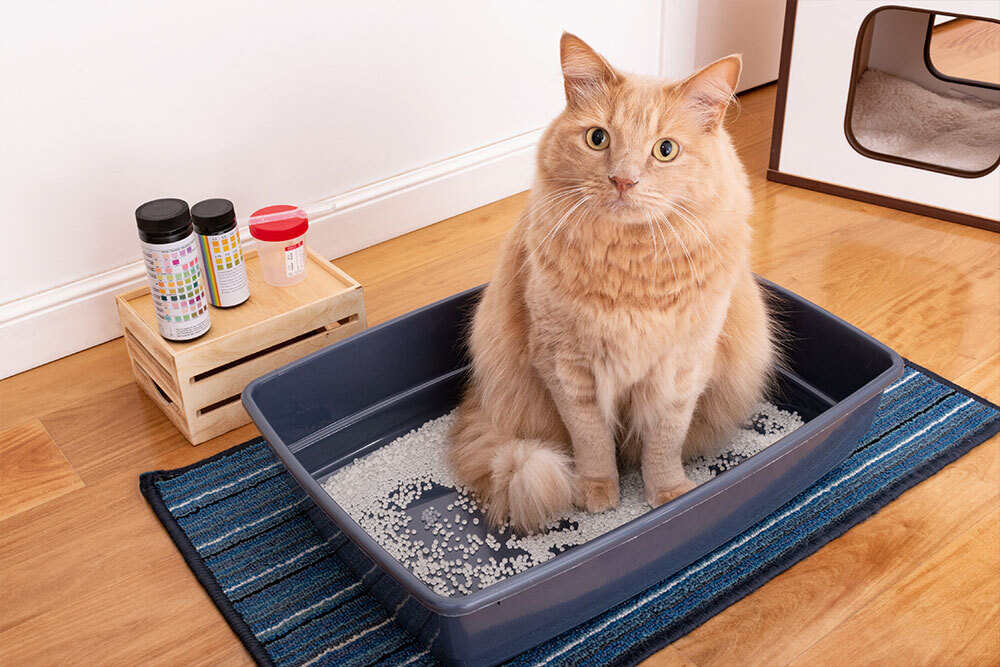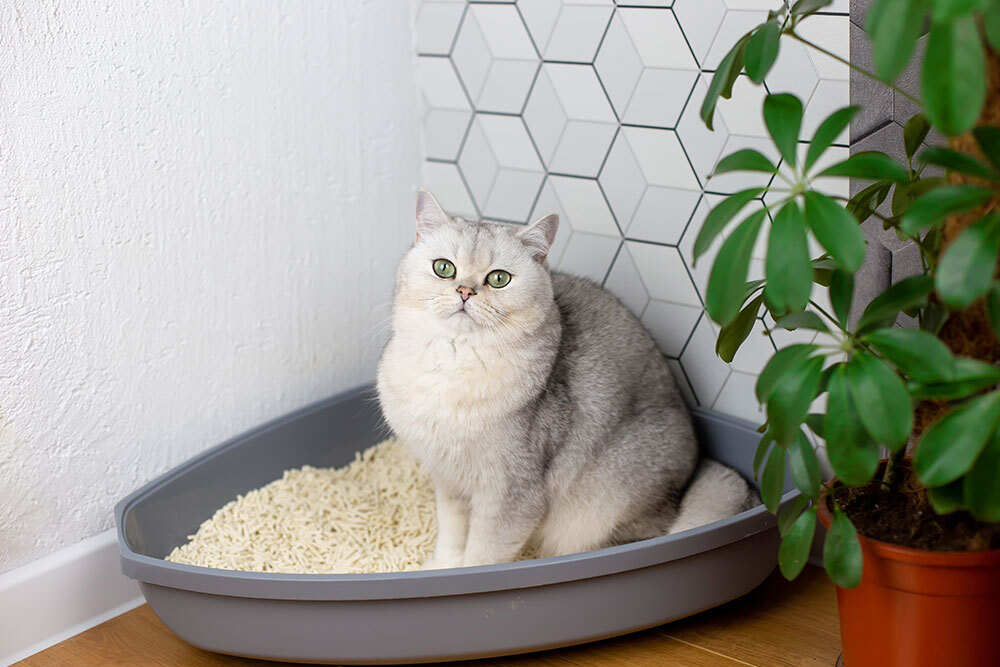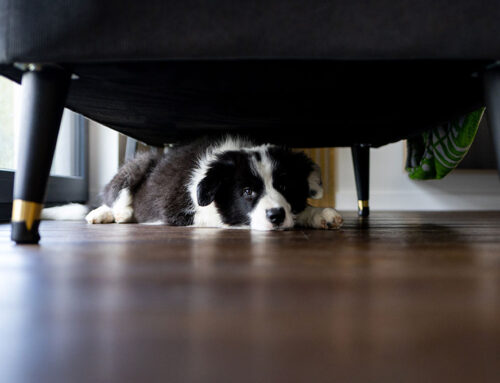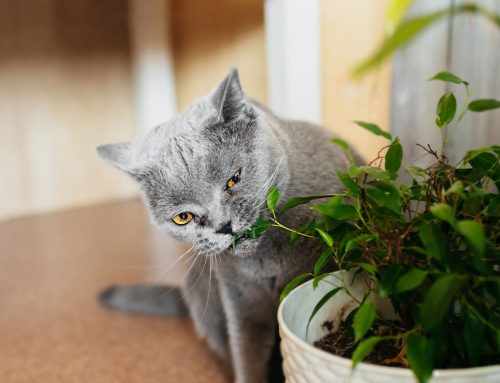Is Your Cat in Pain When Peeing? Urinary Blockages Explained
East Wind Animal Hospital | Willow Grove, PA
It starts with a sound you can’t ignore: your cat crying from the litter box. He crouches, strains, and nothing comes out. Minutes later he returns, still uncomfortable, still unable to pass urine. Within hours, toxins begin to build and his life is at risk. Urinary blockages are true emergencies that can turn fatal within 24-48 hours if untreated. Knowing the signs and acting quickly can save your cat’s life. At East Wind Animal Hospital, we’re prepared to provide the urgent care, diagnostics, and treatment these emergencies demand.
Why Urinary Blockages Are Different From “Just a UTI”
A urinary blockage occurs when the urethra (the tube carrying urine out of the body) becomes partially or completely obstructed. Male cats are especially at risk because their longer, narrower urethra is easily blocked by crystals, stones, or inflammatory debris. While a urinary tract infection can cause discomfort, it rarely stops urine flow. A blockage, on the other hand, prevents urination entirely and quickly leads to kidney damage and dangerous electrolyte imbalances. Understanding this difference helps owners react without delay.
Another critical distinction: cats with a UTI usually can still pass at least small amounts of urine. Blocked cats, however, may leave the box with nothing at all, or only tiny drops. This difference can mean the line between discomfort and a life-threatening emergency.
Red-Flag Symptoms That Need Immediate Attention
Cats often hide pain, but urinary blockages create unmistakable signs. Seek emergency care immediately if you notice:
- Repeated, unproductive trips to the litter box
- Straining or vocalizing during urination
- Bloody or pink-tinged urine
- Excessive licking of the genitals
- Restlessness, hiding, or sudden aggression from pain
- Vomiting, lethargy, or collapse
Some cats show subtler clues first, like smaller litter box clumps, a strong ammonia odor in the coat, or unexplained weight loss. Keeping track of daily litter box habits- especially in overweight, male, or stressed cats- can help catch problems before they escalate.
It’s important to act quickly. Even if your cat improves slightly, blockages can “wax and wane,” with partial relief followed by full obstruction. Without intervention, toxins and potassium accumulate in the blood, potentially leading to cardiac arrest.
Worried your cat is showing a red flag symptom? We’re here to help. East Wind offers dedicated urgent care services six days a week, with extended evening hours and online check-in to minimize waiting during stressful situations.
Common Causes Behind Urethral Obstruction
Crystals and Stones
Mineral crystals can clump with mucus and cells to form plugs or stones that block urine flow. Over time, they may lodge in the urethra or bladder. Diets and hydration are central to prevention, as outlined in this guide to urinary stone management.
Urethral Plugs
Protein, cells, and crystal debris may combine into soft plugs that act like a cork. These often form during inflammatory flare-ups.
Feline Idiopathic Cystitis
Stress-related bladder inflammation can cause blood, pain, and spasms that tighten the urethra. Managing feline idiopathic cystitis often requires both medical treatment and home stress reduction.
Urinary Tract Infections
Though less common in cats, infections irritate the bladder lining and produce debris that may obstruct flow. Learning to recognize the signs of urinary tract infections helps owners act before a blockage develops.
Diet and FLUTD
Poor hydration, obesity, and mineral-heavy foods increase the risk of feline lower urinary tract disease (FLUTD). Specialized diets designed for FLUTD management can dissolve certain crystals and reduce recurrence.
How We Confirm the Diagnosis
Diagnosis begins the moment you arrive. Our team prioritizes blocked cats and moves them quickly into treatment.
- Physical Exam – A distended, hard bladder is often the first red flag.
- In-House Lab Work – Rapid blood tests and urinalysis through our diagnostic laboratory check kidney function, electrolytes, and infection markers.
- Imaging – Digital radiographs and advanced ultrasound reveal stones, plugs, or tissue changes and guide urine collection for culture.
These diagnostics not only confirm a blockage but also help us identify underlying causes, so we can recommend prevention strategies once your cat is stable.
Emergency Treatment at East Wind
Catheterization and Stabilization
After pain relief and sedation, a sterile catheter relieves the obstruction and flushes out debris. Intravenous fluids rehydrate and restore electrolyte balance. In some cases, antispasmodic medications are also used to relax the urethra and prevent re-blocking.
Monitoring and Support
Cats typically remain hospitalized for 24-48 hours so we can track urine output, kidney values, and prevent rebound obstruction. If infection is identified, targeted antibiotics are started. Our facility provides non-critical hospitalization with 24-hour monitoring, while critical emergencies are stabilized and transferred for specialty care when needed.
Surgical Options for Repeat Blockages
For cats with repeated obstructions, a perineal urethrostomy may be recommended. This surgery widens the urethral opening, reducing the risk of future blockages. Because it is a significant procedure, PU surgery requires thorough preoperative evaluation and careful recovery management, but it often provides long-term relief for cats suffering frequent blockages.
Prevention and Long-Term Care
Hydration: Encourage drinking with fountains, wide bowls, and by adding water to wet food.
Diet: Prescription urinary diets support balanced pH and reduce mineral buildup.
Stress Management: Provide vertical perches, hiding spots, and consistent routines. Enrichment and pheromone diffusers can help reduce stress- a common trigger for urinary issues.
Routine Checkups: Twice-yearly preventive care exams allow us to run urinalysis, blood panels, and imaging to detect issues early. For pets with complex urinary or kidney disease, our internal medicine services provide advanced management tailored to each case.
Vigilance: Cats who block once may block again. If you think your cat is showing even the first signs of re-blockage, East Wind’s urgent care team is available Monday through Saturday with extended hours for emergencies. Early intervention not only relieves pain but also preserves kidney function.
You Don’t Have to Face This Alone
Blockages are one of the most stressful emergencies a cat owner can face. The good news is that with prompt treatment, most cats recover fully and go on to live happy, comfortable lives. At East Wind Animal Hospital, we combine medical expertise with compassionate care, guiding you from the first frantic phone call through treatment, recovery, and prevention planning.
If your cat is straining, vocalizing in the box, or simply “not right,” don’t wait. Call us at (215) 659-5380 or request an appointment online today. Together, we’ll help protect your cat’s health and ensure many more quiet, peaceful moments at home.








Leave A Comment